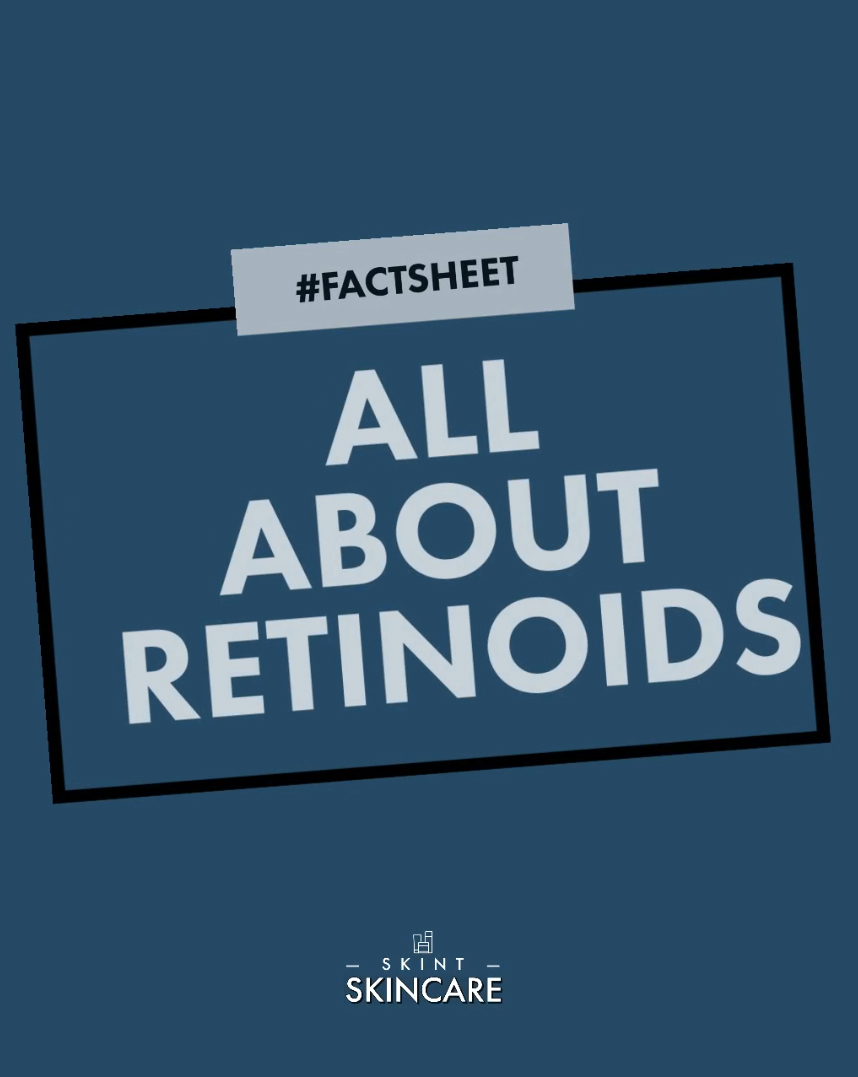
When I first discovered my passion for skincare I was perplexed by the term retinoid. It can be quite a complicated thing to understand as a skincare newbie, so I’ve set about putting together a factsheet for my followers to look at and read. This touches the surface of retinoids in general, so you may wish to go off and do further research yourself once reading this post 🤓
Please note, if you have serious skincare concerns you should always seek the advice of a dermatologist or doctor. I am just a skincare enthusiast. 👩⚕️👨⚕️
What are Retinoids?
Retinoid is the umbrella name for the Vitamin-A family. Retinoids when applied topically to the skin will accelerate skin cell turnover, help unblock pores and increase collagen production – which is why it’s the current gold standard ingredient in skincare routines.
Retinoids were originally used to treat acne, but the patients it was used on soon found that their fine lines and wrinkles had visibly reduced, as well as any hyperpigmentation.
No matter what form of retinoids you use, your skin can only use the active form of Vitamin A which is Retinoic Acid. Depending on the retinoid you are using it may have to convert through several stages in order to become retinoic acid. The less stages it has to convert through, the quicker the result.
Stages of Conversion
Retinol Esters > Retinol > Retinaldehyde > Retinoic Acid.
Types of Retinoids
There are several retinoids used in products to be on the lookout for when purchasing. These are the most common you will come across.
Retinyl-Palmitate
The lowest strength and thus the most gentle. It has to go through three stages of conversion (Retinol > Retinaldehyde > Retinoic Acid). Available over-the-counter and will be in a lot of retinoid serums you come across. This is a good choice for people with really sensitive skin.
Retinol
The most widely available retinoid in the over-the-counter market. It’s in the majority of retinoid based skincare products. The strengths used in the formulation will vary in strength up to 1% but the most common percentage you will find is around 0.03%. IT has two stages of conversion to get to Retinoic Acid (Retinaldehyde > Retinoic Acid).
Retinaldehyde or Retinal
The highest strength available over-the-counter. It only has to go through one conversion stage and therefore gets to work quicker on the skin.
Tretinoin or Retin-A
The highest strength that uses pure retinoic acid, so it will get to work immediately once on the skin. Available on prescription only, typically prescribed by dermatologists.
What do Retinoids do?
Retinoids accelerate cell turnover and as a result, users will find a wealth of benefits when using retinoids in their routine, such as:-
- Prevents Wrinkles – they minimise and prevents fine lines and wrinkles
- Treats Acne – they regulate oil production and speeds up skin cell turnover which prevents pores from clogging.
- Even Skin Tone – they accelerate skin cell turnover, which means you will notice a brighter, even skin tone. It’s excellent for hyperpigmentation issues.
Who should use Retinoid?
Most people can benefit from using retinoids in their routine. It is often recommended that a good age to start using retinoids is around age 25, when you skin starts to slow down collagen production. This opinion varies depend on who you ask. I personally started using them aged 26.
Many brands suggest you should avoid using retinoid products when pregnant or breastfeeding. You may wish to switch to a different anti-ageing serum that does not contain retinoids, such as a peptide serum. Always consult with your doctor about the skincare products you plan to use during pregnancy to ensure safe practice.
How to use Retinoid Products
Retinoids are UV sensitive and so are best used in your evening routine, unless the product instructions state otherwise. You must ensure you are wearing at least a SPF30, preferably SPF50, sunscreen when using retinoids. They will make you skin more sensitive to sunlight.
You should start with a low strength if you can and build up tolerance before moving onto higher strength retinoids.
If you are new to retinoid, you need to build up tolerance to it. Start by applying once a week and so on until you are using it frequently. There is not rule as to how often you should use them in your routine. Some people tend to use it every single night. I choose to use every other night.
Many people are put of using retinoids as you may experience redness, irritated skin, dryness or flaky skin depending on the formula. Not everybody does experience this, but many users do. Use a moisturiser or facial oil after applying your retinoid serum to buffer it.
Retinoids should be applied on cleansed skin followed by a moisturiser and/or facial oil.
You can use retinoids with Vitamin C, AHA’s & BHA’s. This may cause your skin irritation so go carefully and choose wisely what you use alongside your retinoid serum.
Do you use retinoids in your routine? If so, let me know in the comments some of your favourites and why you like them! Let’s share our product recommendations for anyone who is unsure.